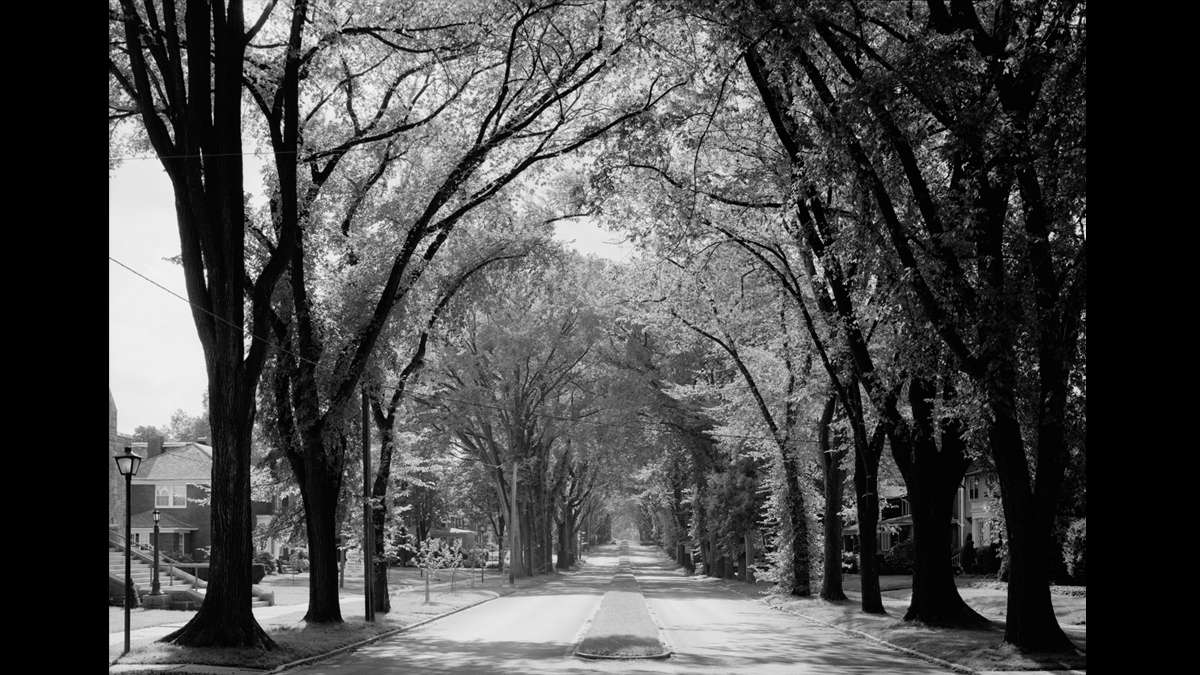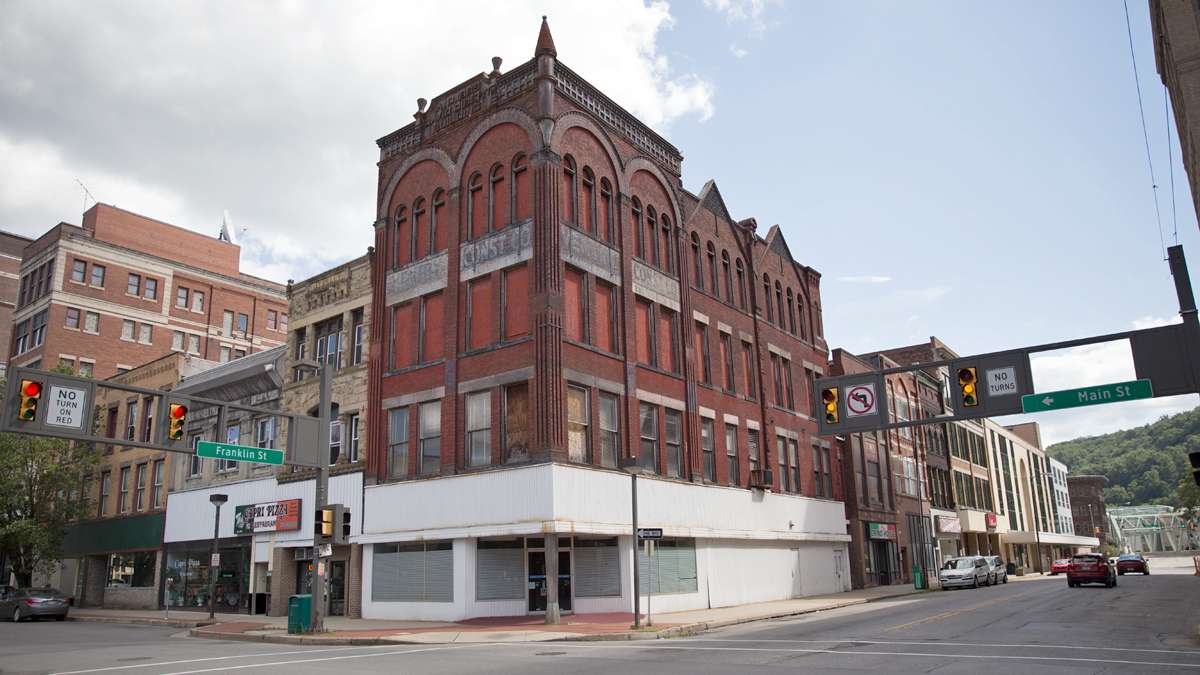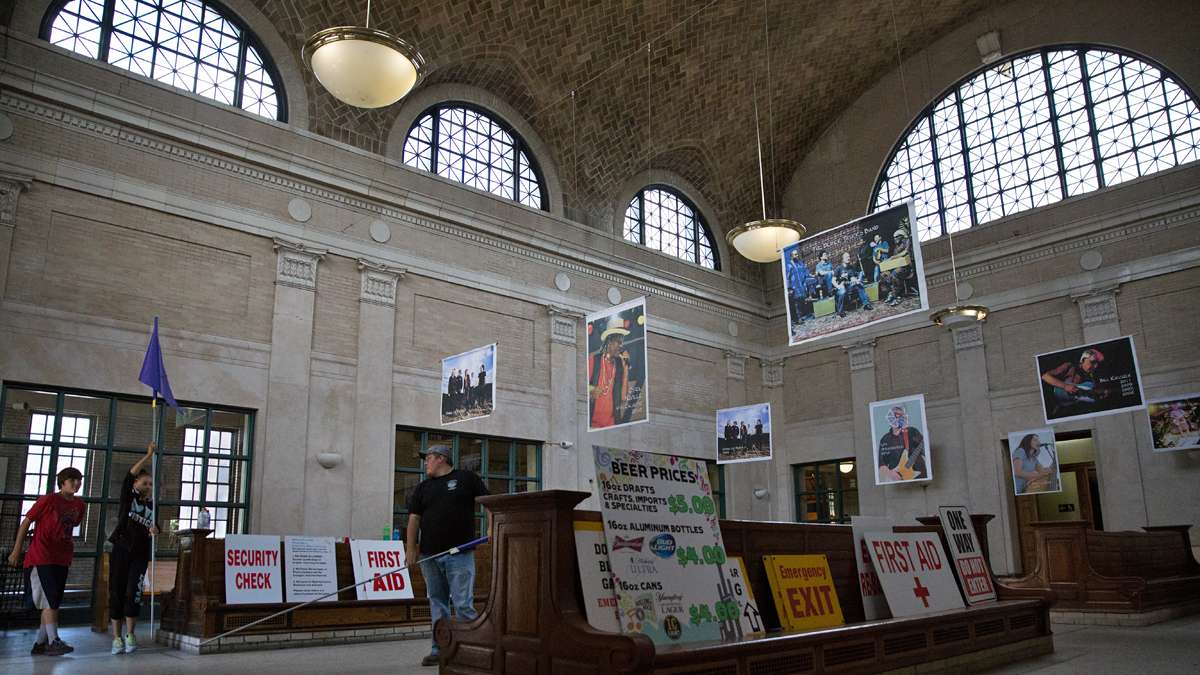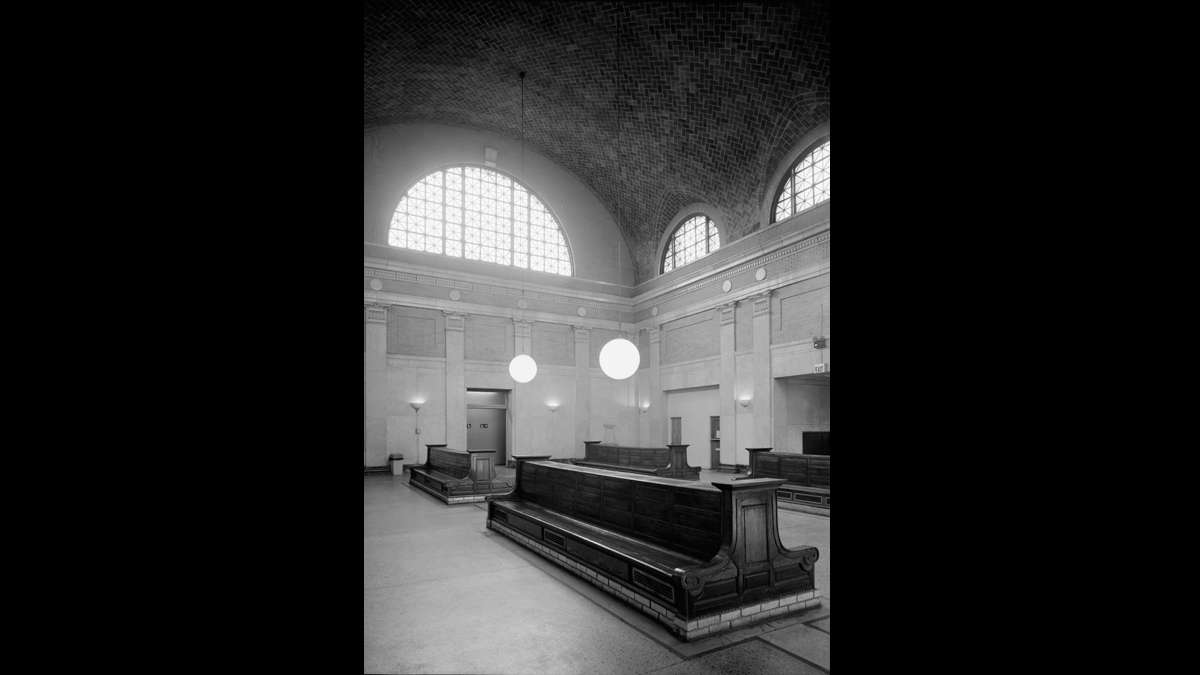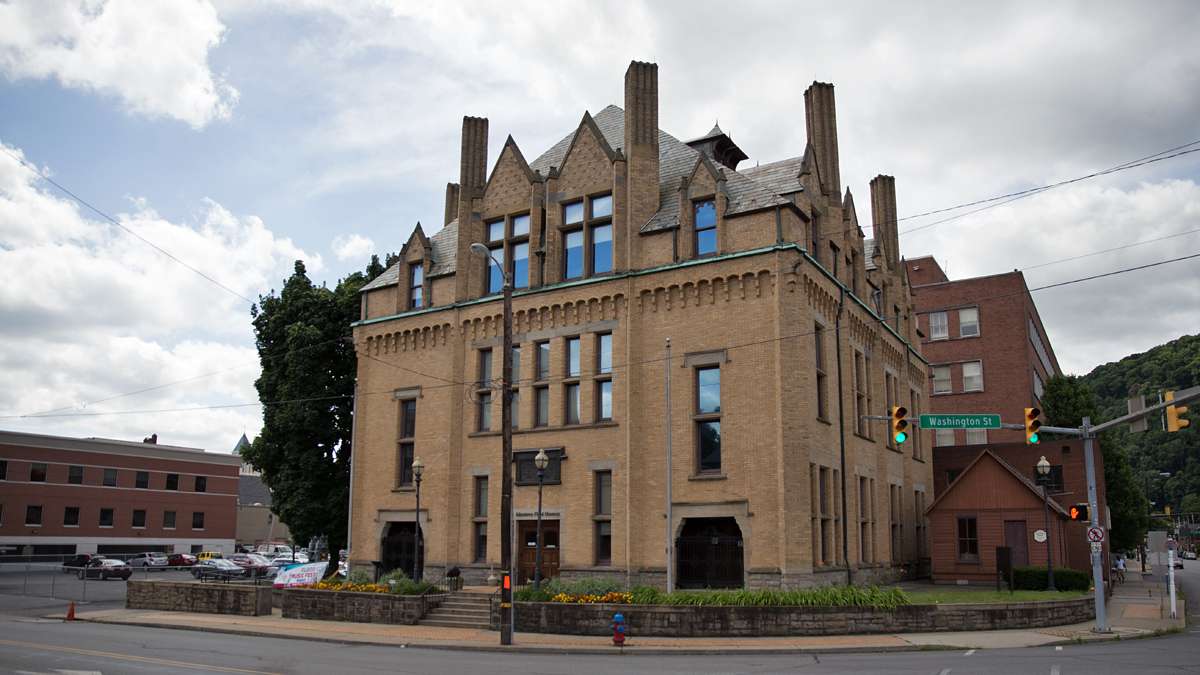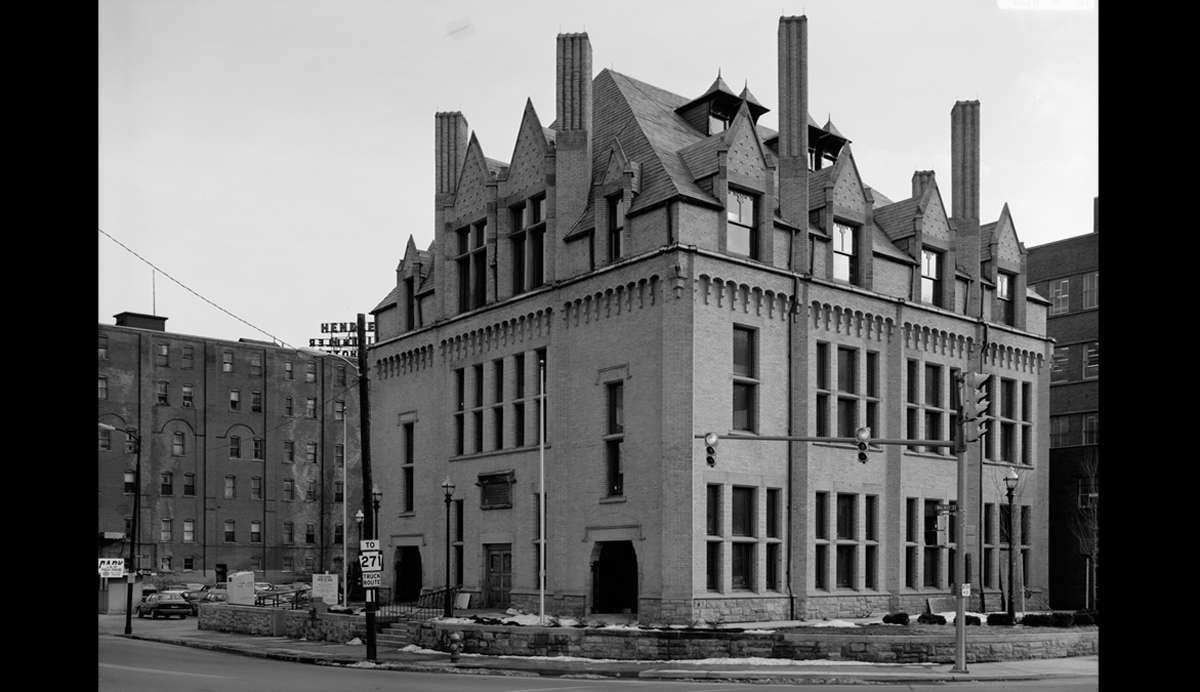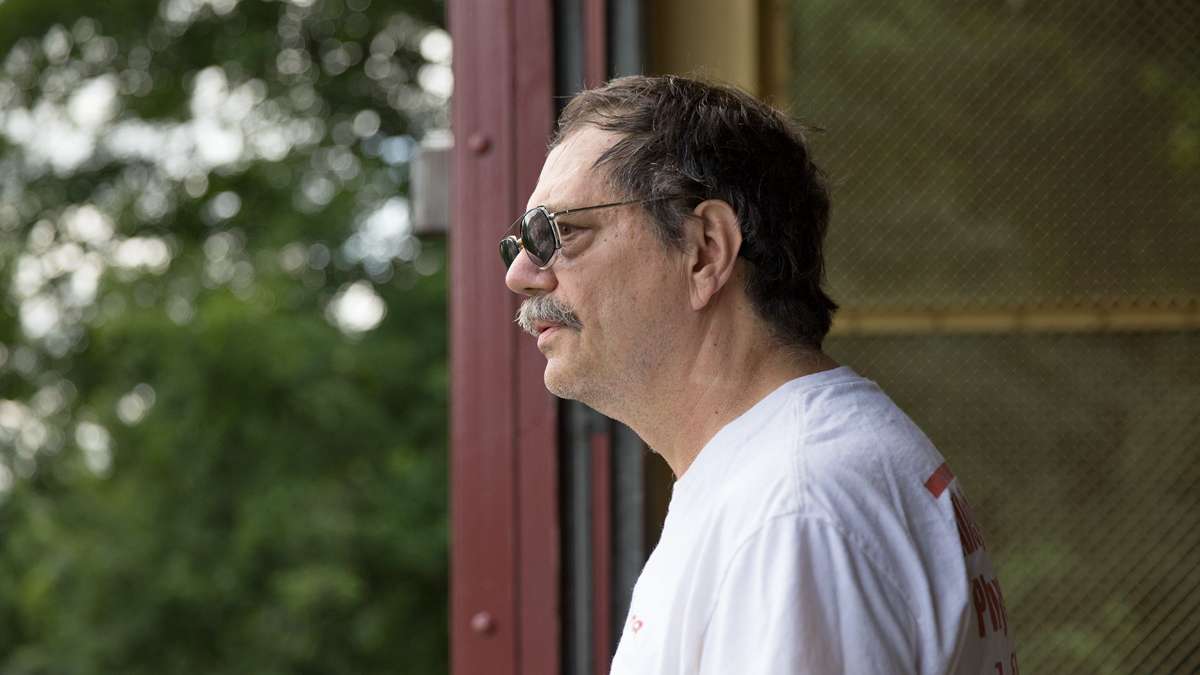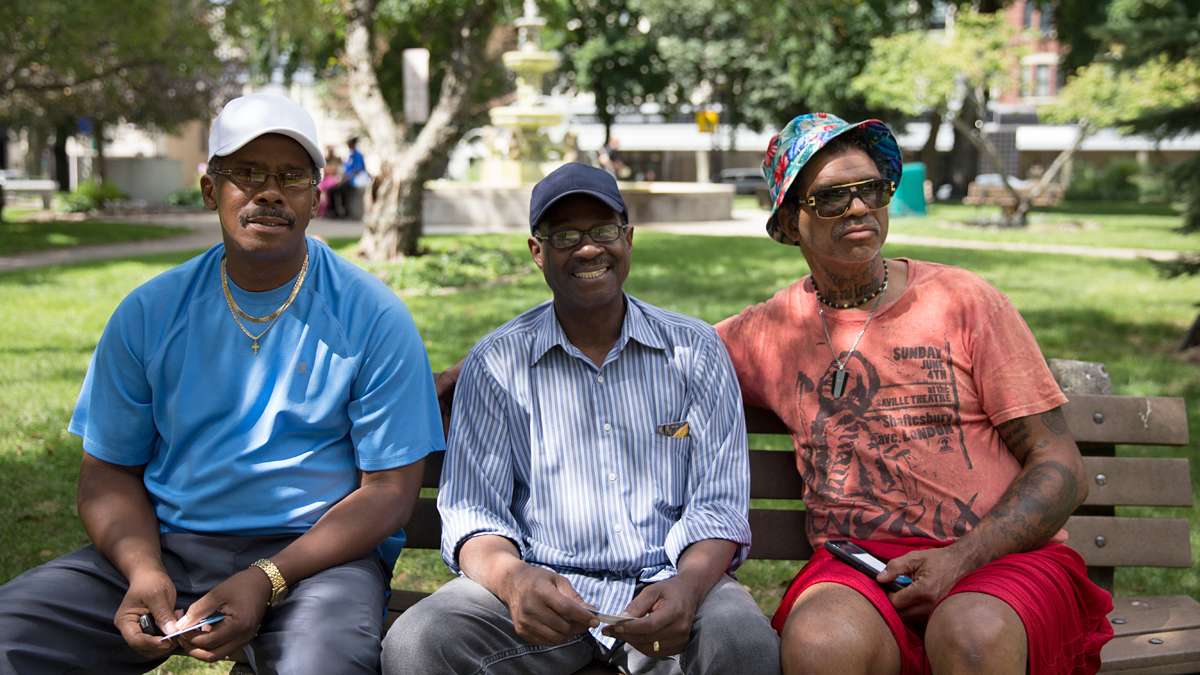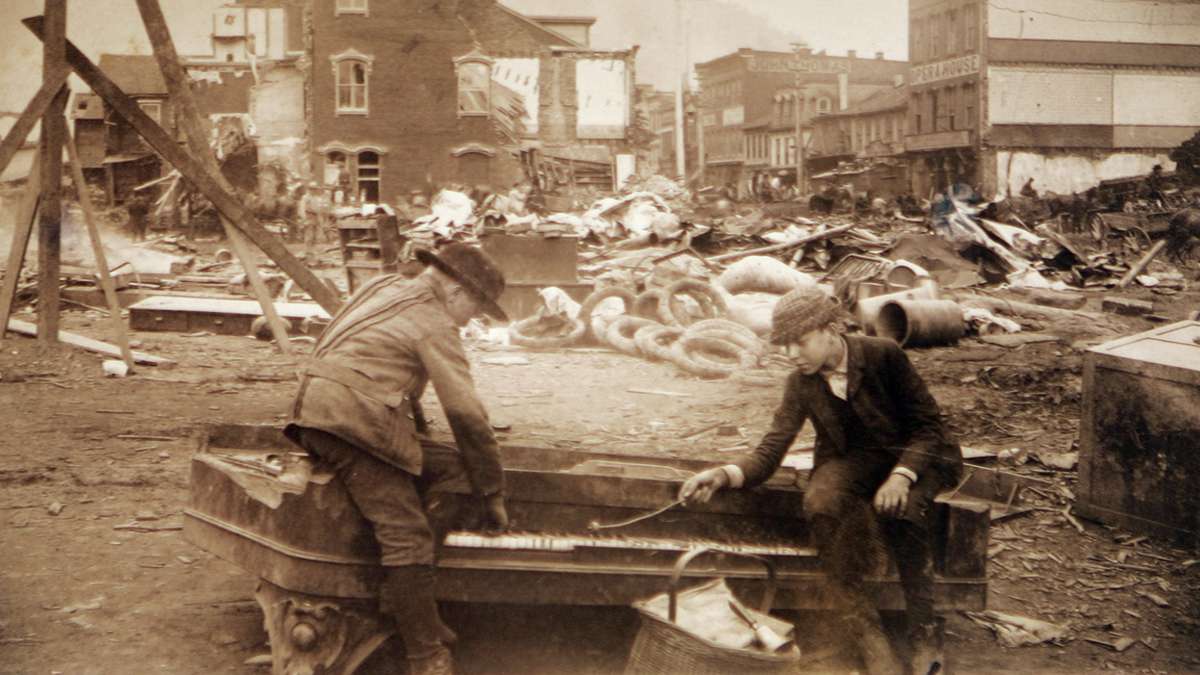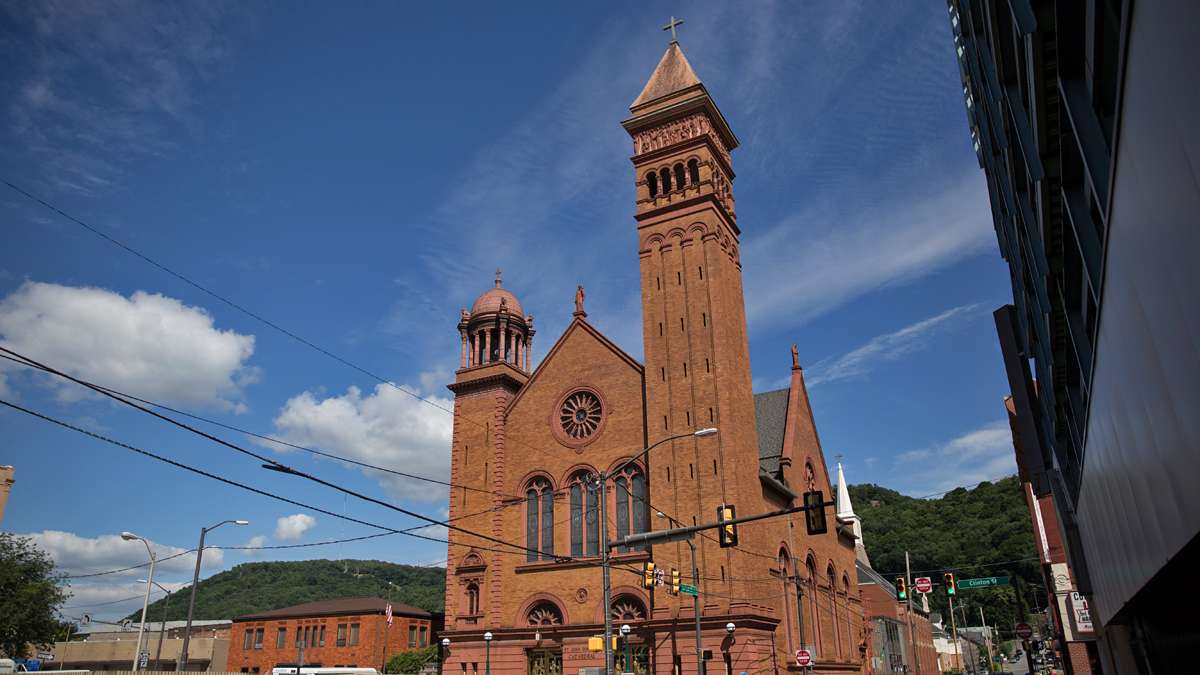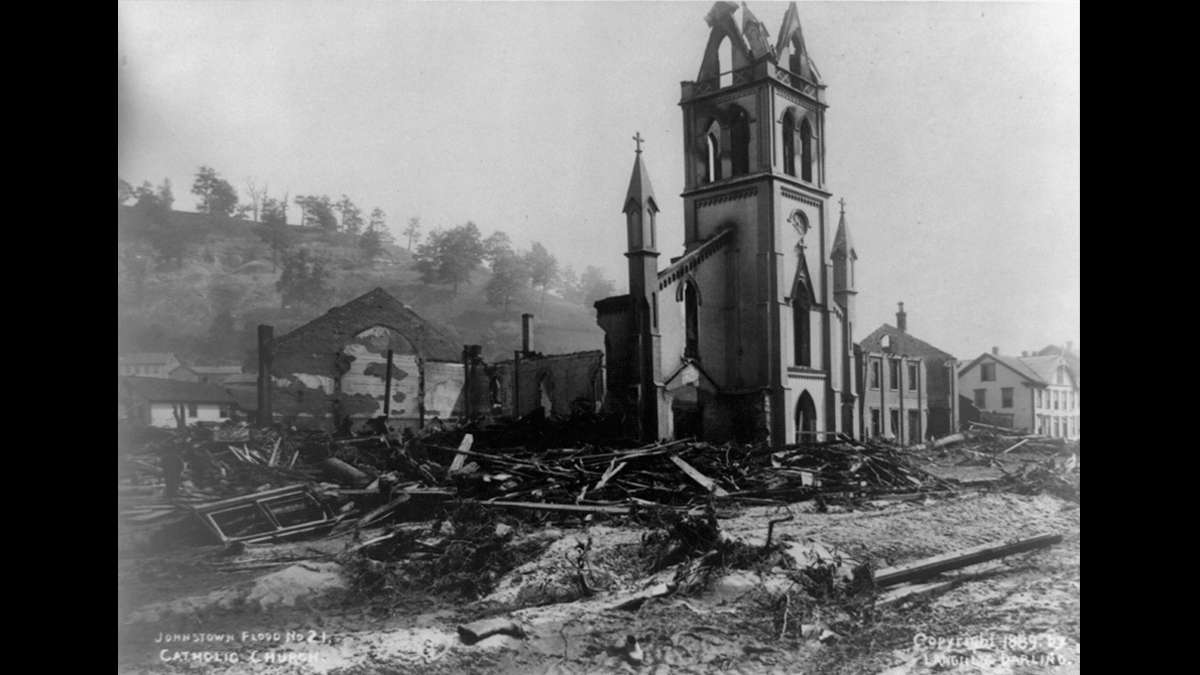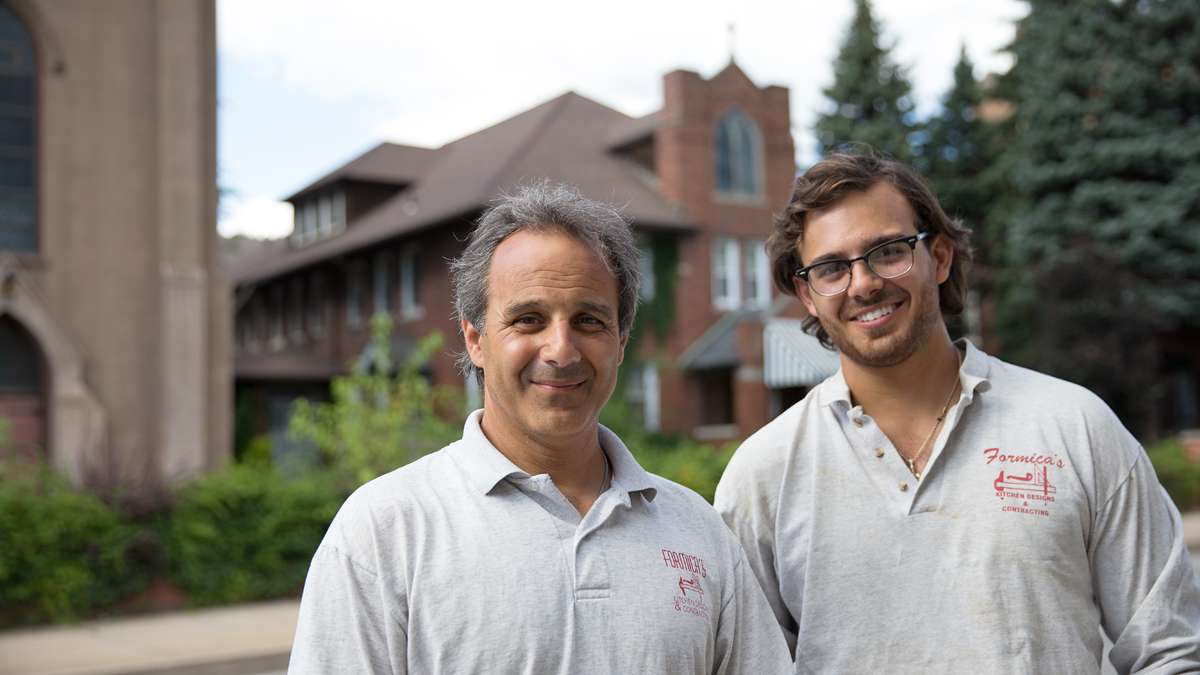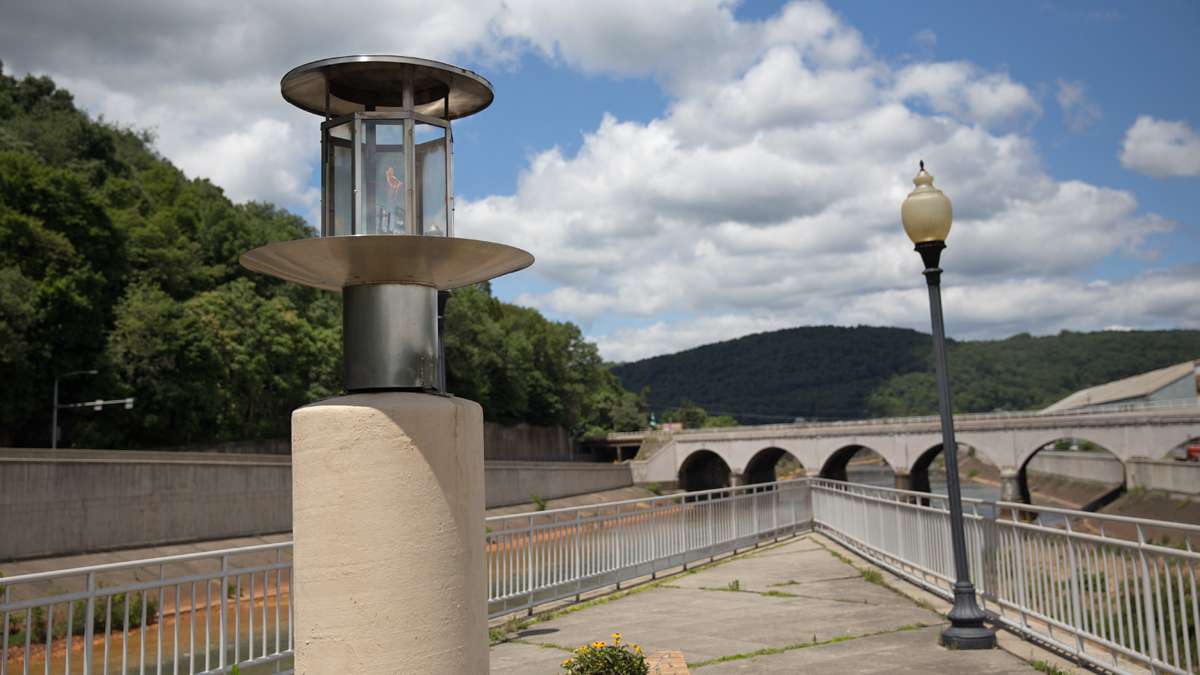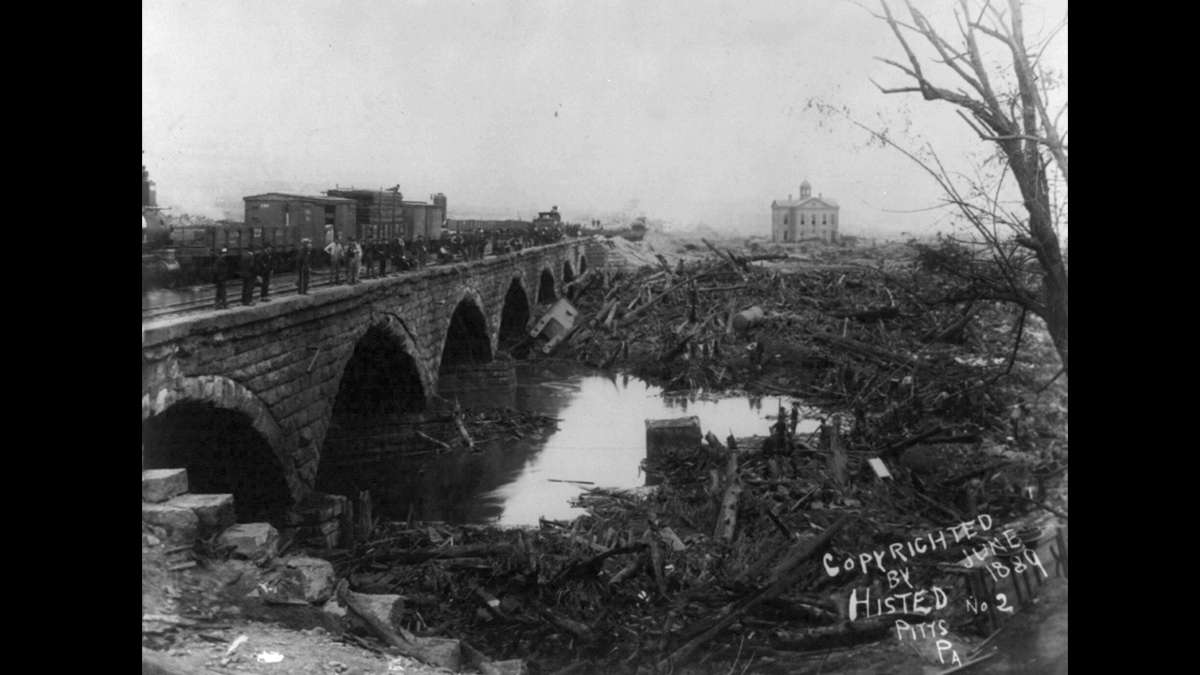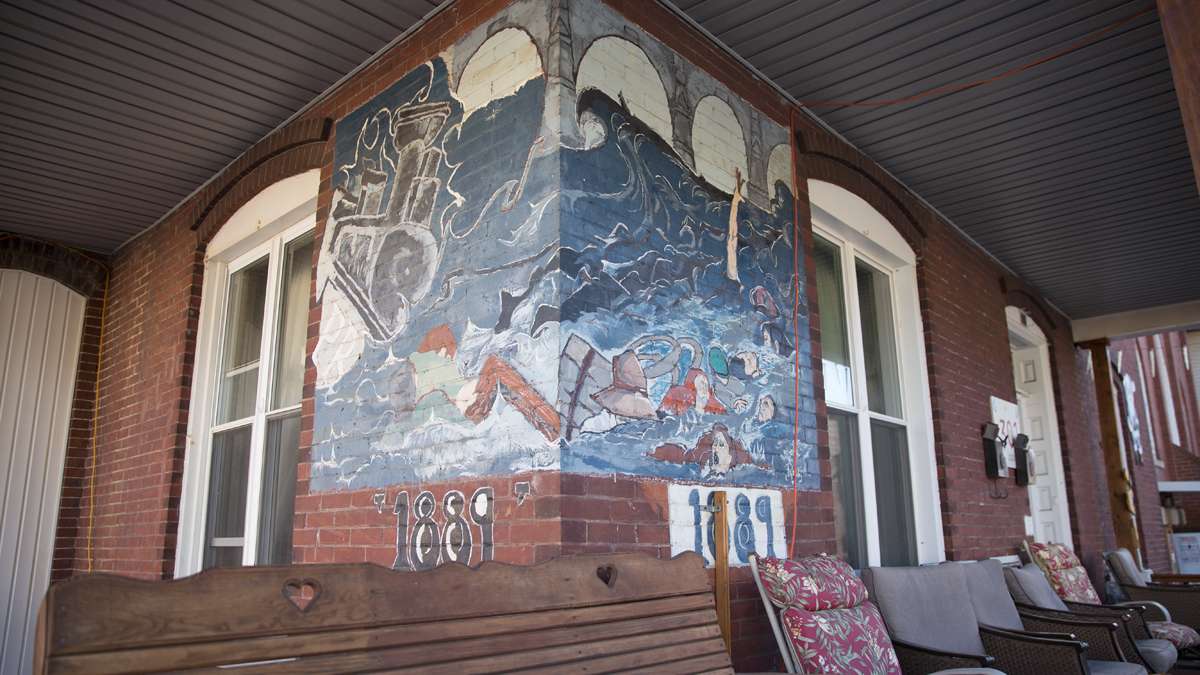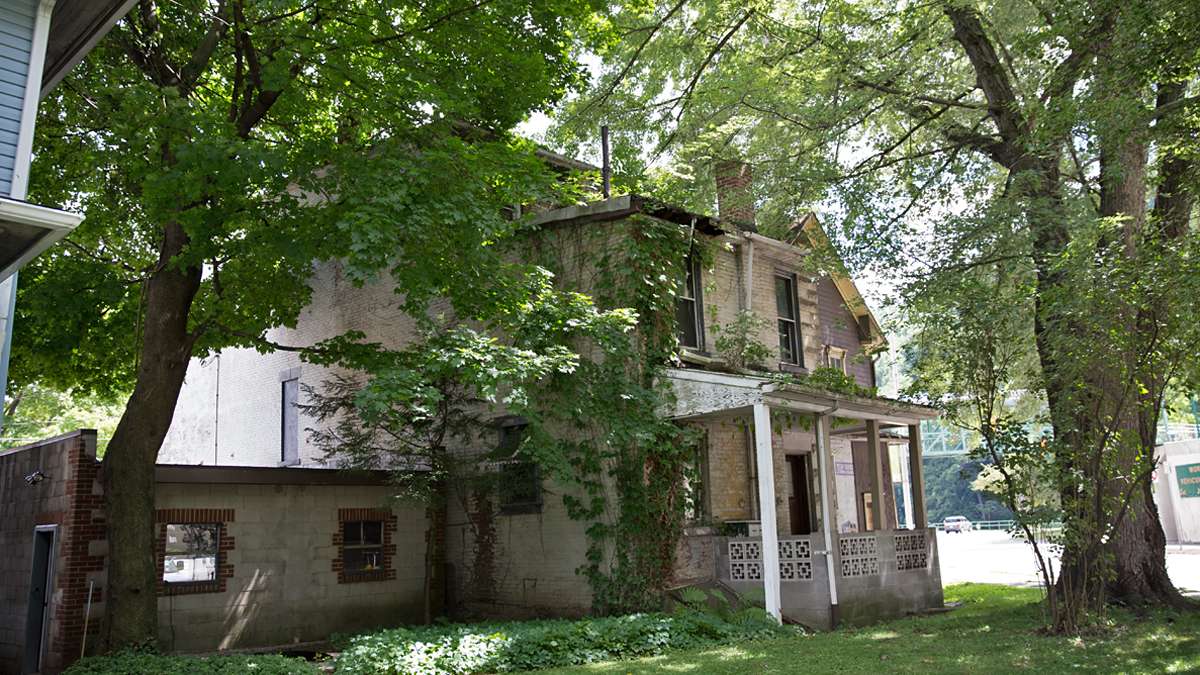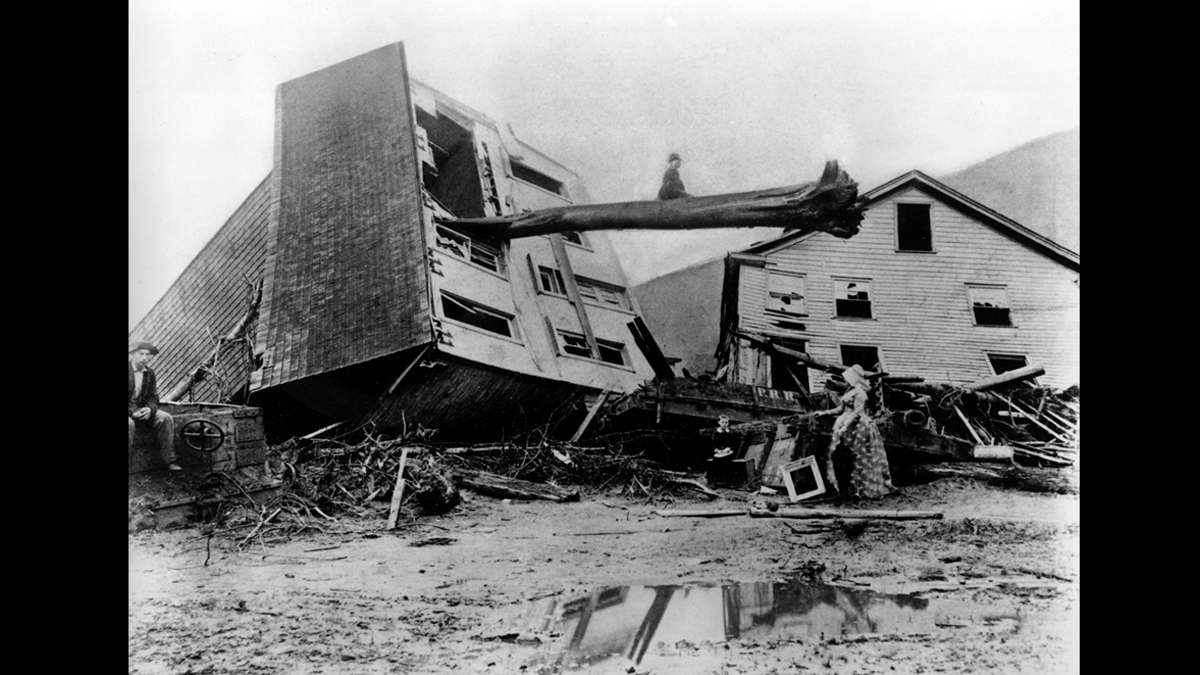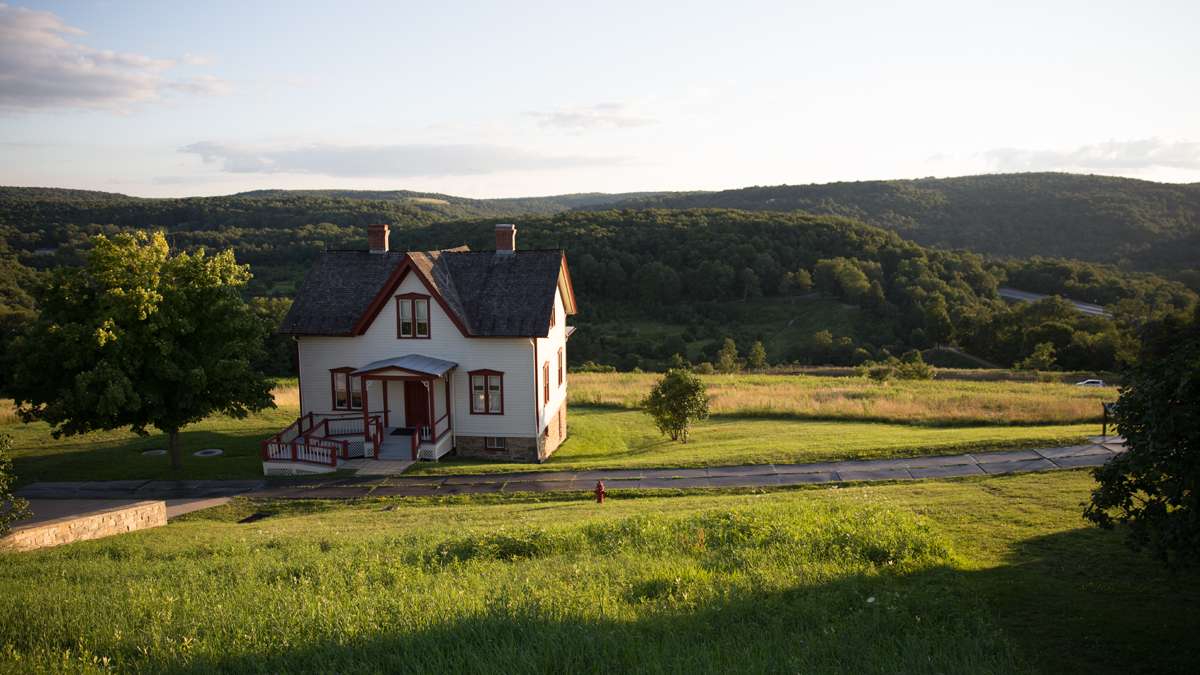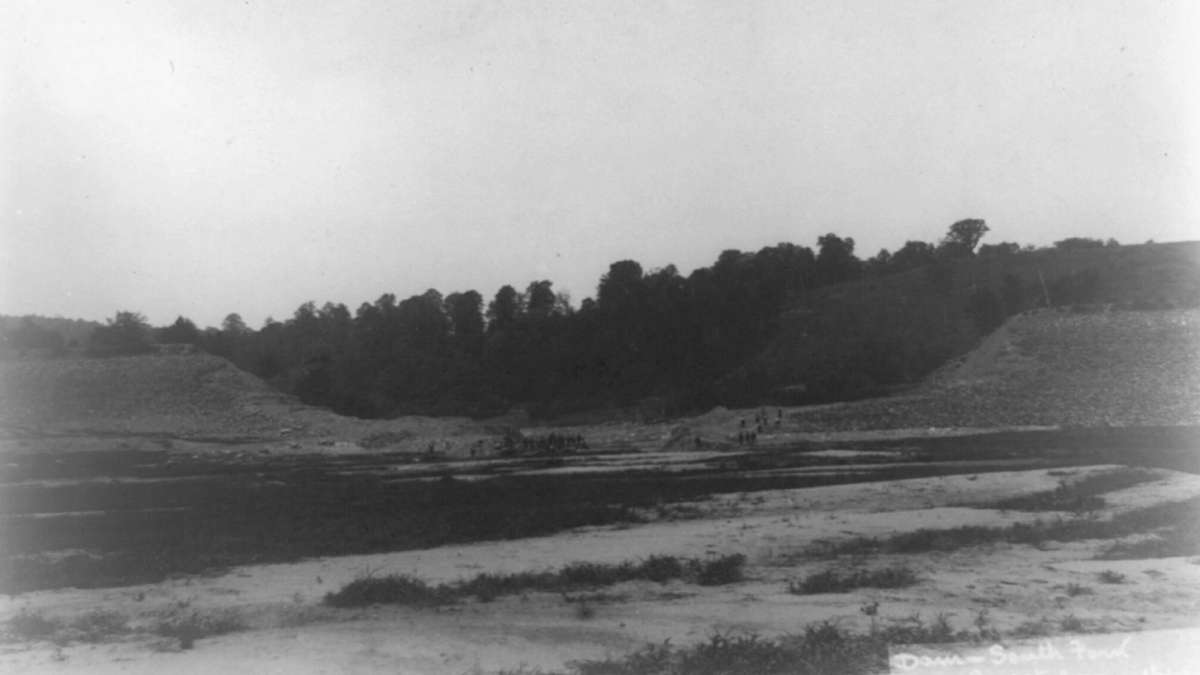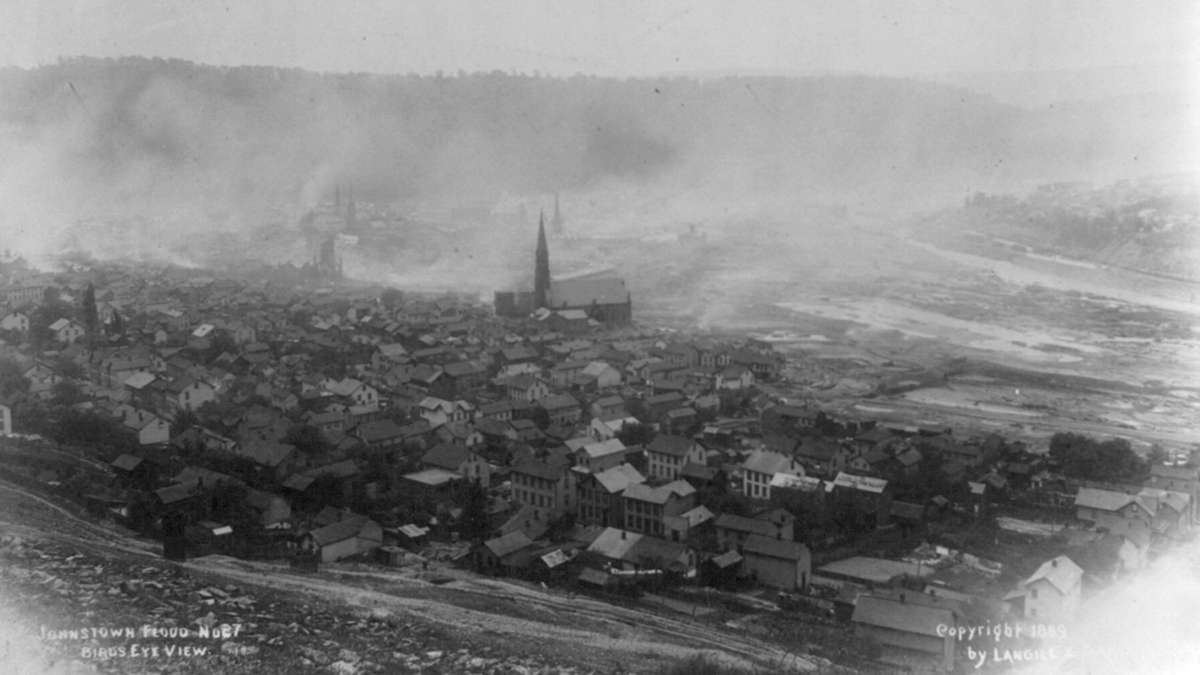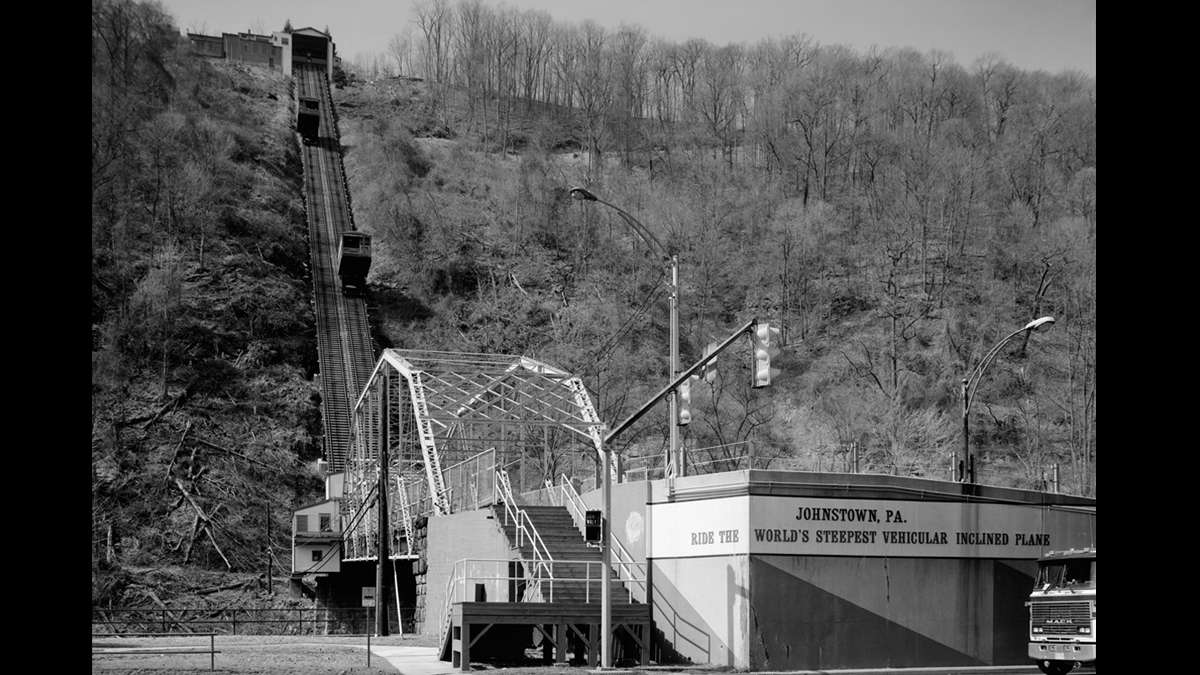Photos: Johnstown then and now, embracing the history of Flood City
In June 1889, newspapers from around the world published sensational headlines that read: “Horrors of Horrors,” “Awful Calamity. Johnstown Wiped Out!” and “Fire Finishes All Left By the Flood.”
Then and Now is an ongoing photographic series from Keystone Crossroads, looking at historical images and photographs of today from Pennsylvania cities and towns.
In June 1889, newspapers from around the world published sensational headlines that read: “Horrors of Horrors,” “Awful Calamity. Johnstown Wiped Out!” and “Fire Finishes All Left By the Flood.”
On the last day of May, the South Fork Dam collapsed — sending a wall of water nearly 40-feet high from the man-made Lake Conemaugh, 14 miles through the river valley to Johnstown, Pennsylvania.
Houses, churches, train cars and trees were ripped from foundations and swept away in flood waters. Piles of debris rushed down the Little Conemaugh River and became trapped in the arches of the Pennsylvania Railroad Stone Bridge near the center of Johnstown.
The Stone Bridge remained anchored, but the debris caught fire and burned for three days – killing an estimated 300 people. Casualties from the flood disaster totaled 2,209 people, including 99 families and 396 children.
This year marked 125 years since the flood waters of Lake Conemaugh ravaged Johnstown, but residents still speak about the flood of 1889 as if it were a recent memory.
Since 1889, Johnstown has been hit by two other devastating floods, in 1936 and1977.
“We don’t want to shy away from the fact that we have a deep-rooted history with the flood,” says Renee Daly, the city’s director of economic development. “After all three, especially the 1889 [flood], the nation came to our rescue and helped us, but we also helped ourselves.”
For Daly, the story of the floods is not only one of destruction, but also of generosity and perseverance: “It’s breathtaking to see what people nationwide are willing to due during natural disasters.”
In the aftermath of the 1889 flood, a natural disaster relief effort helped to deliver food, prefabricated houses, and about $3.7 million in charity donations to 25,000 survivors. That would be more than $89 million today. Clara Barton came to town, making the Johnstown Flood the first peacetime relief effort of the American Red Cross.
Despite the city surviving three disasters, Daly admits she has mixed feelings about Johnstown being dubbed “Flood City.”
There is Flood City Music Festival, the Flood City Cafe, and Flood City banners proudly placed downtown.
But when she hears residents say a flood occurs every 40 to 50 years, and Johnstown is due for another big one, Daly frowns. She says the city has to think in terms of progress, not doom.
“We are a river city, but it doesn’t have to necessarily be a negative thing,” said Daly.
Perhaps a billboard from 2002 best captures her sentiment about the Flood City. She described the tourism ad as an image of a man with old fashioned shoes and pants — hiked up six inches above his ankles. Next to the high-water slacks read a simple tag: “Flood’s over, come back …”
Archival images from the Library of Congress, The Associated Press, and the Historical Society of Pennsylvania.
WHYY is your source for fact-based, in-depth journalism and information. As a nonprofit organization, we rely on financial support from readers like you. Please give today.






